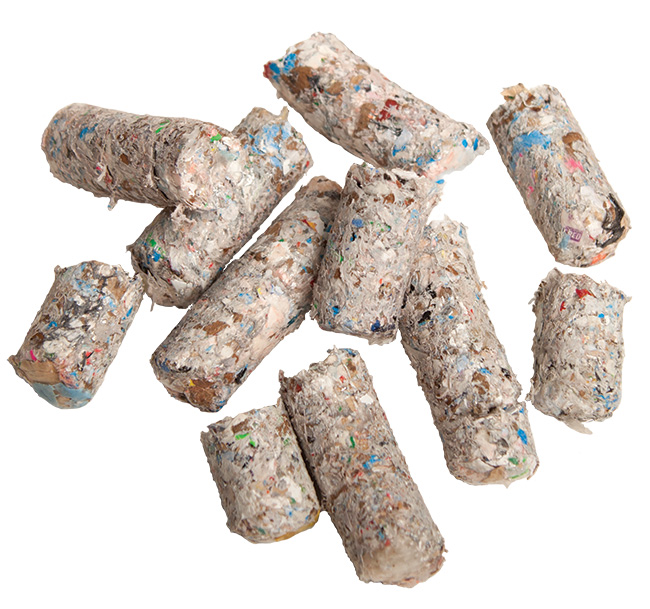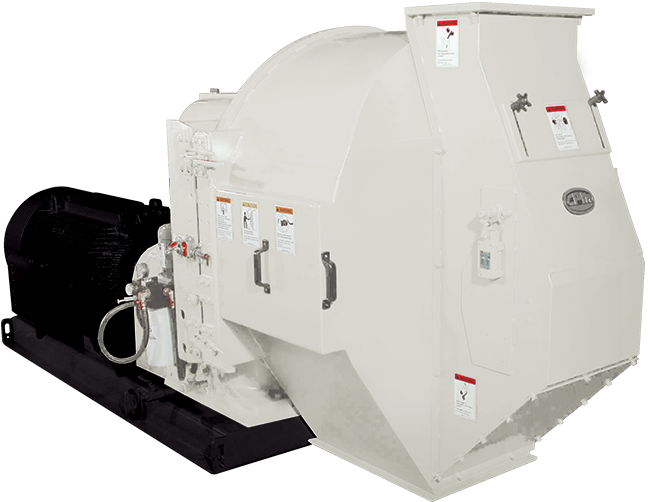While some states may see landfill space maxed out in the next five to 10 years. Turning waste into a fuel source through the pelleting process is both a solution to aid in reducing landfill usage, and a potential a source of income and energy that has only begun to be tapped into.
By Josh Gilla
According to the EPA, Americans produce nearly 300 million tons of municipal solid waste (MSW) each year. Roughly one-third of that waste is recycled or composted, and another 12 percent is combusted as part of energy recovery initiatives. Nearly half of it, 146 million tons, ends up transported to landfills and buried. It is also important to note that MSW is only referring to the various items that are discarded and collected via residential and commercial trash pickup. MSW does not include items such as construction and demolition debris, wastewater sludge, and other various non-hazardous industrial waste—all of which ends up at landfills on top of the 146 million tons of MSW.
Some states, specifically in the northeast, will see landfill space maxed out in the next five to 10 years. Alternative solutions for disposal must be implemented before the U.S. runs out of landfill space. Turning that waste into a fuel source through the pelleting process is both a solution to aid in reducing landfill usage, and a potential a source of income and energy that has only begun to be tapped into.
Transforming Waste into Fuel
There are four primary sources of waste and recycling used to make refuse-derived fuel (RDF) pellets. The first is household or residential waste. This consists of items such as paper, plastics, wood products, etc. This also includes debris from construction sites. The second source is carpet waste. Both raw and used carpeting can be used for pellet production. Automobile carpeting is included here as well. The third is sewage sludge. The fourth is insulation such as rock wool and foam insulation, or automobile seats and their filling.
RDF pellets can also be made from byproducts of the farming and agriculture industries, such as discarded crop byproducts and manure. The pellets made from these various waste streams all have similar characteristics. They can range in size from 1/8″ to 3/8″ and have bulk densities ranging from 25 to 50 lb./ft3, depending on the specific recipe and mixture of products. The size will be dictated primarily by their function or use, and the density will be affected by the specific mixture or ingredients in the pellet.
Regardless of the specific waste stream, or mixture of streams being used, the process of transforming feed stock material into RDF pellets is remarkably similar. The first step in the process is sorting the feed stock into organic and nonorganic waste. This is typically done via mechanical means, using rotating paddles and screens to separate the food and organic waste from the nonorganic (plastic packaging, film, etc.) waste. The organic waste is then sent off to a separate process, such as disposal, recycling, or a digester for gas recovery. The nonorganics are then sorted further. There are multiple technologies out there to sort out the hard plastics from the burnable plastics. Optical sorters using lasers and pneumatics to identify heavy plastics and blow them out of the stream are very common. The lighter, burnable plastics and waste are then sent to the primary shredder.


The primary shredders for nonorganics typically use 50×50 or 60×60 mm screens, and in some cases up to 100×100 mm screens, to break down the material to a manageable size for the dryer. Following the primary shredder, the shredded material is conveyed to the dryer. This is a vital step to ensure that the material is dry enough, (below 12 percent moisture), so that the pellet mill is operating efficiently. The potential problems associated with higher moisture will be discussed in the following section. The use of a primary shredder prior to the dryer is required as it results in a more efficient drying process. The larger the material going into the dryer, the more energy and time will be required to dry the material. The screen size on the primary grinder is chosen in a similar fashion, in an effort to find the balance between minimizing the energy required and maximizing the output. A low temperature belt dryer is recommended for the drying process. Higher temperature dryers, like rotary drum dryers, will cause the product to melt and congeal before the pellet mill. Low temperature belt dryers minimize melting while adequately drying the material to maximize pellet production and quality.
Following the dryer, the material should be fed through the secondary or fine shredder. This shredder uses 25×25 mm or 30×30 mm screens. These screens are specifically chosen to ensure the material is sized appropriately to maximize the pellet mill production rate and pellet quality. After the stream has passed through the fine shredder, it is then conveyed to the pellet mill. The throughput is largely dependent on material quality, mixture, and size of pellet that is required. As the pellets drop out, they are transferred to a cooler before being packaged or stored. Cooling the pellets is vital to a high-quality pellet. Adequate cooling creates durable, separate pellets that do not stick together.
Troubleshooting Moisture and Other Problems
Each waste stream presents its own unique potential pitfalls and problems that must be overcome. Both residential waste and carpet waste streams present the problem of metals and nonferrous solids that must be removed. Magnetic traps and air density separators will be vital throughout the process to ensure those contaminants do not make it through to the pellet mill, as they can damage the die and internal components. Silica, sand, and other corrosive and abrasive contaminants are common problems throughout all the various sources of waste and recycling. Ensuring that the proper cleaning equipment is in place to remove as many contaminants as possible will be paramount to an efficient process.
One of the major problems that is faced in the waste and recycling pelleting process is moisture. MSW, sewage sludge, industrial, and agriculture wastes streams are the most common offenders of high moisture. This is not a common concern if the stream is primarily insulation. Excessive moisture content at any stage of the process results in wasted energy. At the shredders, if the moisture is too high, the screens will blind over and plug. At the pellet mill, energy will be wasted on compressing the water and not used to pellet the material. The dies in the pellet mill are also at risk of plugging if the moisture content is too high. Excessive moisture will degrade the quality of the pellets and cause the pellets to not properly bind together or lower their calorific value. Moisture is one of the most important challenges to overcome and have the proper procedures in place to combat.
The large particle size of the feed stock, and the lower density of most waste streams, present another major roadblock that must be overcome. The two shredders, the primary shredder and the secondary shredder, are the two main points of overcoming that obstacle. Using proper conveying methods, such as belts, instead of screw conveyors, is another method of control that will help negate the downsides of the material properties. The pellet mills themselves should be outfitted with the proper technology, developed specifically for lighter, fluffier material to ensure there is no bridging or clogging in the feed system.
Lucrative and Beneficial
While not an easy process, waste and recycling pelleting—the producing of RDF pellets—is a process that can be incredibly lucrative and beneficial to the planet. It is a process that presents a number of challenges that must be overcome, though most of those obstacles can be navigated using existing equipment. Using equipment providers with experience with these materials processes will be vital to the success of any RDF process. | WA
Josh Gill is Waste and Recycling Sales Manager for California Pellet Mill (CPM). After a handful of years working in the oil and gas industry, he began working as an aftermarket parts customer service rep for Bliss Industries. Taking advantage of opportunities to learn and advance his career, he worked his way up to the position of Sales Manager. After the CPM acquisition of Bliss Industries in 2021, Josh assisted with the integration and eventually transitioned into his new role as the Waste and Recycling Sales Manager, responsible for all waste and recycling projects in North America. He can be reached at (918) 260-4807 or e-mail [email protected].
